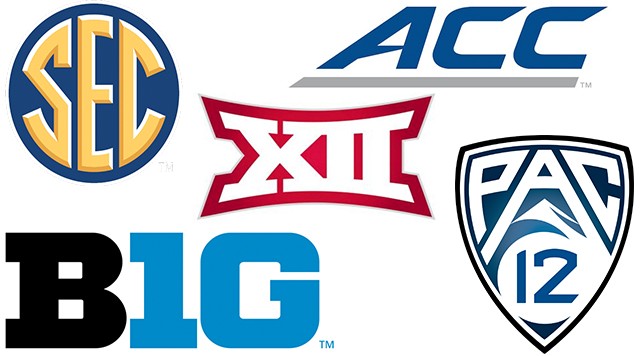The fifth anniversary of Nebraska leaving the Big 12 for the Big Ten apparently gave editors everywhere the same idea, as a slew of conference realignment retrospectives from football writers came out yesterday. Not surprisingly, one of them from Stewart Mandel of FOX Sports took the ever-popular “winners and losers” angle.
It’s an odd exercise that depends entirely on how you judge the objectives of the players. For example, West Virginia, one of Mandel’s losers, isn’t winning at the same clip that it was in the Big East, but it did jump into a Power 5 league. Likewise, winner Missouri got stability and new football cache with its move to the SEC, but what about its tradition-rich hoops program?
The fact of the matter is that all the teams that (intentionally) switched conferences did so for a reason. Whether it was Nebraska escaping its deteriorating relationship with the Big 12 or Texas A&M looking for a new start, it’s hard to label any of the emigres as losers.
A more intriguing angle: How many of the programs and fans in the conferences that added teams are happy with the results?
The moves haven’t come without headaches. For instance, adding Texas A&M and Missouri to the SEC threw the conference schedules out of whack. West Virginia’s geographical proximity — or lack thereof — to its conference mates in the Big 12 has caused logistical issues. The same probably holds true for Big Ten West teams traveling out to Piscataway.
In other cases, some conference members probably feel as though they’ve been sold a bill of goods. Take Nebraska’s mediocre stretch of football in the Big Ten. Colorado football somehow managed to get even worse after joining the Pac-12. And what’s the best thing that could be said about the ACC adding Pittsburgh and Syracuse?
We’ve also seen traditions disintegrate and rivalries splinter. The split between Texas and Texas A&M tends to get the most pub, but whatever was left of Nebraska-Oklahoma from the Big 8 days is gone now, too. Who knows when we’ll see the Border War or Backyard Brawl start back up again. Even the least sentimental of observers would have to admit that sucks for fans and the sport as a whole.
Ultimately, the motivations behind conference realignment were primarily TV-centric. Utah and Colorado gave the Pac-12 added leverage in negotiations on a new media rights contract and two more in-state markets for the Pac-12 Network. The SEC’s additions enabled the conference to re-open its TV deals and launch its conference network. The Big Ten added new footholds on the East Coast.
That all makes for some sweet backslapping every year when the conferences announce their annual disbursements to their members. But did shaking things up to suit ESPN’s ends really change things for the better at most schools?
People like Jim Delany and Mike Slive might look at all of this as progress. The view is probably a little different in the stands and athletic department offices.

